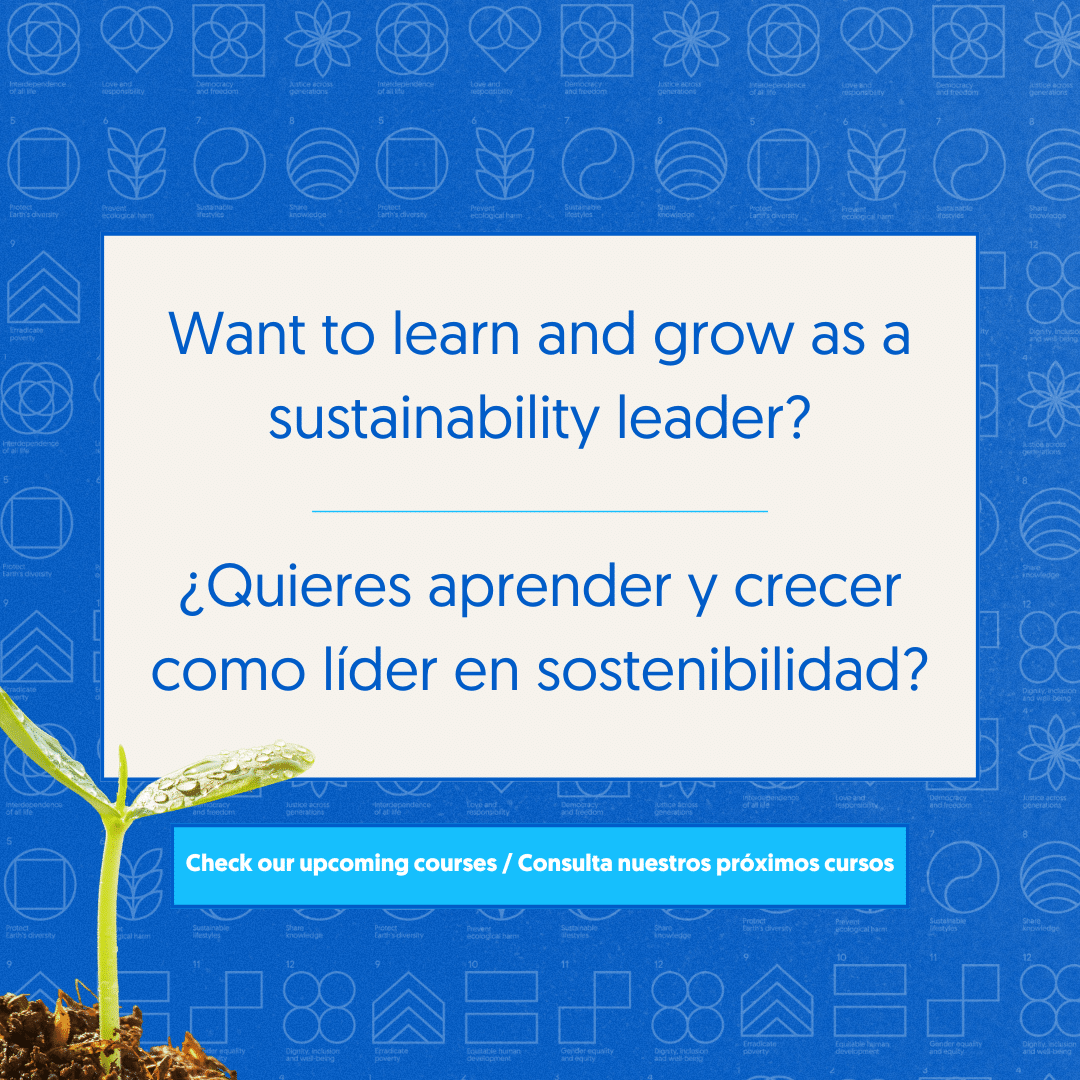The Earth Charter & ESD School Seal verifiers have been trained in the pedagogy associated with the Earth Charter through the Online Certificate on Education for Sustainable Development.
Schools interested in receiving the EC ESD Seal must seek the support of one of the verifiers presented in this list, so that person can verify the evidence to obtain the seal, designate the level achieved and offer suggestions and guidance for the school’s improvement.
Chris Beehner
Read more
Close description

Dr. Chris Beehner is a business professor at Seminole State College of Florida, and has developed and taught courses for several colleges and universities. Prior to joining academia, Dr. Beehner was employed in the supply chain management industry, and he has also held nonprofit leadership roles. He has published, presented, and served as a panelist on workplace spirituality, sustainable business, and leadership topics. He is a community fellow at the University of Central Florida Center for Global Economic and Environmental Opportunity, where he collaborates with representatives from academia, industry, government, and nonprofits to discover the sustainable solutions necessary to attain the Sustainable Development Goals.
Wendy Coulson
Read more
Close description

Wendy Coulson is an international education consultant based in Mexico. She has worked in 11 countries with various organizations such as the U. S. Department of States’ English Language Programs, British Council, American Councils for International Education, TESOL International Association, University of Cincinnati’s Systems Development and Improvement Center, NILE, Soros Foundations Professional English Language Teaching Program, National Geographic Learning, and Richmond Publishing. Before becoming a consultant, Ms. Coulson worked in K-12 and adult education. She holds master’s degrees in Applied Linguistics and K-12 Education from Indiana University and the University of Illinois at Chicago, respectively. For the past two years she has focused her work on Education for Sustainable Development (ESD) and Global Citizenship, earning a certificate from the Earth Charter Center in ESD which qualified her to become an Earth Charter School Seal Verifier. Her final project for the course was a 2-day course for TESOL International Association on Environmental Sustainability for public school English teachers in India.
Valerie Ellis
Read more
Close description

Valerie “Terry” is the President and concurrent Treasurer of CEIN. Terry is also the Program Chair for International Peace Education. She began her career as a journalist and then for 20 years worked as Montessori guide with students in preprimary through middle school. Terry earned her undergraduate degree at the University of Maryland, College Park, and currently is working virtually on her master’s degree in Value Creating Education for Global Citizenship at DePaul University in Chicago. She lives in South Florida, U.S.
Silvia Ferrero
Read more
Close description

Working language: English and Italian
EC Certified Educator for SD, EC School Seal Verifier and UK Focal point. Anthropologist, Managing Director Silvia Latham Consultancy, Coaching and Mentoring on Eco-development.
I have a PhD in Social Anthropology and I am an Earth Charter Certified Educator for SD and School Seal verifier. In 2023, I co-facilitated courses 3 and 4 in the EC Online Certificate on ESD. In 2022, I was guest speaker at the course Product Design Engineering at the Engineering faculty at Canterbury Christ Church University, Kent, UK. Since then, I introduce Sustainability and the Earth Charter in the course. As a motivational coach, I work with private and corporate clients, secondary and university students. I am committed to using The Earth Charter principles and values as a foundation for my professional consultancy to enhance eco-development and encourage personal growth also through the endorsement of the values expressed in the Earth Charter. As an anthropologist, I also worked on a three-year EU funded comparative project on schooling and ICT with five European institutions under the Socrates-Minerva Program.
Jennifer Jordan
Read more
Close description

Jennifer Jordan was initially trained as a Population Biologist, nonetheless she has been a Montessori Secondary Teacher for over 20 years. She has a particular interest in creating educational environments for adolescents. On her journey to find the best ways to do this she earned Montessori Secondary Teaching certifications from both the American Montessori Society and the Association Montessori International, an MEd in Science Education and an MA in Anthropology from the Ohio State University and an MPhil in Educational Research from the University of Cambridge. While conducting research on adolescent development she came to understand how important it is for this age group to become a part of something bigger than themselves. In her own adolescence, Jenn had herself developed a strong connection to our living planet. After learning about the Earth Charter, she decided to open a high school designed around its values and principles, while incorporating all of the best educational practices of Montessori. She now runs Montessori Earth School, a high school located in Columbus, Ohio, USA. Acting as a Verifier for the Earth Charter and ESD School Seal, she is excited to be able to support other schools as they continue their own exploration and growth with the Earth Charter.
Jule Kemper
Read more
Close description

Country: Germany
Position: Learning Design Intern at Forever Day One
I am passionate about transforming our approach to education towards a more value-based, sustainability oriented and student-centred one. With my work I want to empower youths and kids to actively create and design their environments and their future, to stand up for their beliefs and their right for future where the planetary ecosystems are intact. To me, education is a key tool to achieve a more just and sustainable world where humans and nature can live in peace with each other. The Earth Charter School Seal is a great way to introduce sustainable practices and raise awareness in schools on how they can contribute to a desirable future and which role they can play in it.
Filipa Leandro
Read more
Close description

I have a Masters degree in Human Ecology since 2001. It was during my adolescence that I became aware of “our” place in life on earth, which became increasingly clear as knowledge and fact checking advanced. I have always felt the need to pass on values, knowledge, and my passion for ecological integrity, respect for the community of life, and social justice. My presence in both social and family life as well as in my professional life is always accompanied by my ecology wisdom, so becoming a SEAL verifier is of great pleasure to me because I see evolution, hope and a great opportunity for real progress towards a world with a different worldview that gives us hope!
Waverli Matarazzo-Neuberger
Read more
Close description

Waverli Maia Matarazzo-Neuberger graduated in Biological Sciences (1980), with a master’s (1986) and PhD (1994) in Biological Sciences from the São Paulo University. She has a specialization in Education for Sustainability from Schumacher College; Cultural Biology from Escuela Matriztica de Santiago and in Theory U from the Presencing Institute. She was coordinator of the Sustainability Center at Universidade Metodista de São Paulo; responsible for a Whole Institutional Approach Program, The Methodist Sustainable Program; a university professor for 38 years and Santo André Environment Secretary (1993-1996). She is an Earth Charter Advisor and Faculty and The Earth Stories Collection Brazilian delegate.
Laurence Myers
Read more
Close description

Laurence Myers has worked in the confluence of service learning, global citizenship and sustainability since 2012. His hybrid educational role focuses on thought leadership, instructional coaching, learning design, systems thinking facilitation and shifting educational culture to catalyze sustainable institutional culture and curricular change. He leads, coordinates and supports the embedding of a dynamic school-wide program at the American School of Dubai – Changemaker Education – that shifts the teaching and learning environment ever-so-gently to the paradigm shift we hope for. Additionally he serves as a course facilitator and certification reviewer for Compass Education. Laurence facilitates ESD, service learning and systems thinking workshops, coaching and professional training across the globe.
Mukirae Nijhia
Read more
Close description

Country: Kenya
Position: Chairman and lecturer of the Department of Educational Management, Policy & Curriculum Studies, School of Education, Kenyatta University
He holds a PhD degree in Educational Planning & Policy from Kenyatta University, an Advanced Certificate in Education Sector Planning from IIEP/UNESCO and a Certificate in Education for Sustainable Development from the Earth Charter Institute. He teaches educational planning/policy, educational monitoring & evaluation, and Education for Sustainable Development. His research interests are in education financing, education decentralization, ICTs in Education, Teacher Education, and Education for Sustainable Development. Njihia has served as a principal investigator in a UNESCO/IIEP national study on financing of primary education in Kenya. He also served as a principal investigator in a national UNESCO/ Department of Adult Education evaluation of literacy programmes in Kenya.
Sanne van Oort
Read more
Close description

After working as a senior lecturer at the University of Applied Sciences The Hague and as a Research Fellow at the Amsterdam Creative Industries Centre of Expertise in the Netherlands, Sanne Van Oort’s focus on Education for Sustainability led her to become Director of Learning and Teacher and later on Teacher Development and Well-Being Manager at Green School Bali. Her passion is to focus on the way we can design education to create a shift in culture towards pro-environmental behavior. She is the Founder of ‘Mother Jungle’ in Indonesia, which empowers Indigenous mothers to preserve knowledge and storytelling traditions for cultural and environmental conservation. She is a Permaculturist, a facilitator of ‘Inner Landscaping Programs’, Forest School Educator, qualified as official Earth Charter Educator and certified for Design for Sustainability from Gaia Education. Her journey brought her to Hanoi, Vietnam to continue the work on Education for Sustainability as the Head of ESL and Green Education at the first Green School in Hanoi called Genesis School. She is now back in The Netherlands where she works as a Lecturer for International Business focusing on the role of business in improving the planet by next generation professionals combining entrepreneurial competitiveness and social impact. Next to that she works as a researcher for the Sustainability International Business Research Center.
Elizabeth Ulloa-Chaura
Read more
Close description

Elizabeth Ulloa-Chaura is deeply passionate about the environment and committed to promoting an appreciation for nature in people of all ages. Currently, she serves as the Education Officer at the Gibraltar Botanic Gardens, where she shares her love for the natural world in both Spanish and English. Her diverse perspective, rooted in her Chilean heritage, enriches her work and encourages a deeper connection between people and the environment.
With a Master’s Degree in Environmental Education and a wealth of experience in education for sustainable development, she has facilitated numerous workshops and courses, inspiring others to embrace sustainability. Her work includes developing an education strategy and creating educational materials for tours and lesson plans to teach various subjects, from waste management to climate change.


